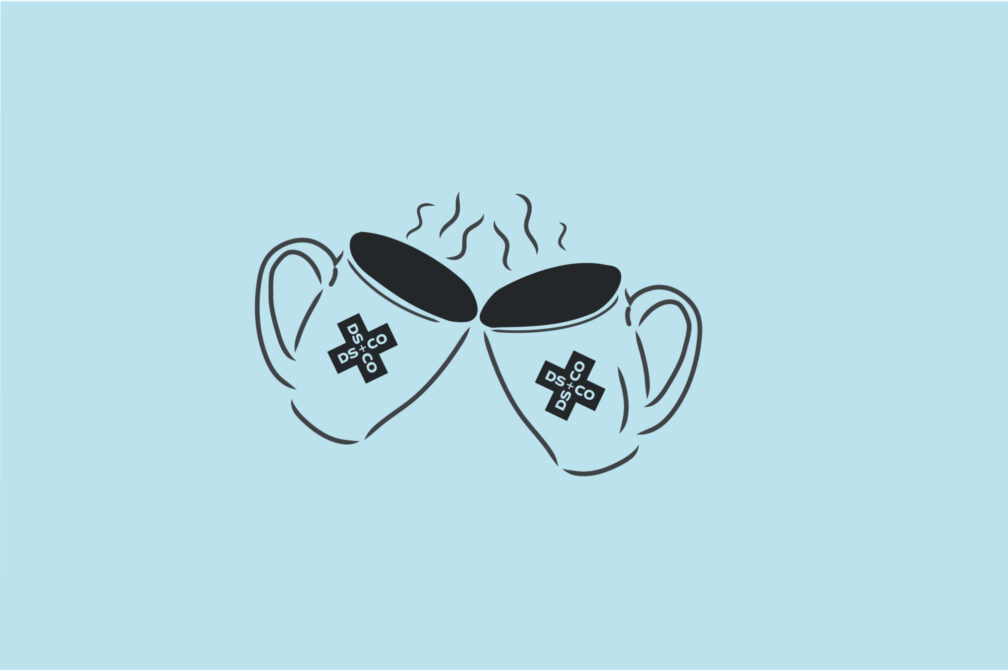Blog
DEI + Culture

Work BFFs are VIPs: The importance of building relationships at work
“I have a best friend at work.”
Aww, that’s nice. But not necessary, right?
Actually, that sweet statement has a sweet spot on Gallup’s famous Q12 engagement survey of what employees need to thrive and perform their best. On the surface, the “best friend” question seems a little fluffy. Business leaders often question its relevance—or worse, roll their eyes at it. Until they see the evidence: Having a work buddy predicts performance. Deep bonds drive productivity. Multiply engagement sevenfold. And improve nothing-to-scoff-at outcomes like profitability, safety and even customer loyalty.
Gallup confidently states that “Our research has repeatedly shown a concrete link between having a best friend at work and the amount of effort employees expend in their job.”
Besides, BFFs make work a lot more fun. And not just for workers. Service-sector companies with the highest scores for “best friend at work” earn higher customer experience rankings, too. In other industries, companies report fewer accidents and less theft. Why? Because people look out for their friends and don’t pilfer from their pals.
Day-job buddies fill a basic human need
We joke about having a work “spouse,” but friendships at work are no joke: “Sense of belonging” is smack in the middle of Maslow’s hierarchy of essential human needs, a motivational theory. At our most primal level, humans need to connect. Since we spend half of our non-horizontal time working, we’d be robots if we didn’t crave friends at work. Many of us even prioritize friends over compensation: 66% of women in a Gallup study said social connections are a major reason they work at all. Not surprisingly, all employees who said they have a best office buddy also look forward to working, are happy with their job, aren’t likely to jump ship and perform at higher levels overall.
Bonus: Trusted pals spark creativity
My friends and I solve the world’s problems on our morning runs and over happy-hour cocktails. We’re not afraid to share our ridiculous ideas because we trust we won’t be ridiculed—not seriously anyway. We have each other’s backs so we aren’t afraid to ask for advice and give feedback. That’s friendship. And research shows that people who are friends with their coworkers feel safe enough to share their thoughts and engage in healthy, productive creative conflict—the secret sauce of innovation.
Easier done than said: Help friendship flourish
I adore my supervisor and consider her a friend. But it’s not her role or any manager’s role to be everyone’s best friend. It’s her job to create an environment where friendships flourish. Here’s how:
Make it safe
If you ever sit next to me on a long flight, I’m sorry. You’ll know how I got every scar on my body before we reach 10,000 feet. Because I’m comfortable (over?)-sharing, it’s easy for people to get to know me. But not everyone feels safe speaking up in the workplace. There’s a legitimate fear of being judged or shut down. And that’s no way to build friendship. So it’s super important to create an open, non-judgmental environment where people feel comfortable sharing and know they won’t be mocked or penalized. Leaders can help by showing vulnerability, maybe talking about a mistake or workplace fail to normalize human frailty. And publicly thanking those who share their thoughts and inviting others to do the same.
Mix it up
Working with the same small group every day is great for building deep bonds. At the same time, teaming with people in different departments expands our circle of friends. It’s all good and necessary: breadth and depth. So bring folks together from all corners. Form cross-departmental teams for new business pitches, community outreach and internal efforts like planning your PR or office party. Have new hires spend time in every area of the company as part of their onboarding. Get to know their interests and communication style, and take that into account when pairing them with an onboarding buddy and mentor, connecting them with future friends.
Be curious
My first day at DS+CO, a fellow writer baited me with “So what are you like when you’re drunk?” Boy, I sure warmed up to Charles right away after that introduction. It’s easy to lock into a no-nonsense, all-business mindset, especially in video meetings and even more especially when we’re heads-down busy. But we can do better. Take a breath and ask about a teammate’s baby or side gig, or compliment their updo. We all have lives outside of work. Getting to know each other’s interests and worlds helps build connections and friendships, trust and inclusion.
Go outside, get moving
I’d only worked here a few weeks when Dana and I ventured downtown to tie scarves, hats and mittens around trees and posts as part of our annual Bundle Up Rochester outreach. And we’ve been good friends ever since. Something about being out of the office, outside, in motion—not necessarily all three—makes us more relaxed and open to getting to know each other. Try offsite brainstorming sessions, client site tours, or how about a walking meeting? Without your computer or phone in your face, you’ll be less distracted and more able to focus and listen.
Tough times call for fast friends
Ballet dancers focus on a single spot to keep from getting dizzy when they turn round and round in pirouettes. As we twist and swirl, adapt and re-adapt ad nauseum to the head-spinning COVID news cycle and what that means for working in person, remote or hybrid, we can “spot” on friendship. Connection is a pillar of employee engagement, happiness and performance. Make it your focal point.
Robin Merrill Lorenzo
Robin Merrill Lorenzo is DS+CO’s content supervisor who creates copy and messaging with a deep understanding of her clients’ brands.